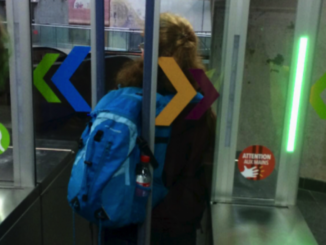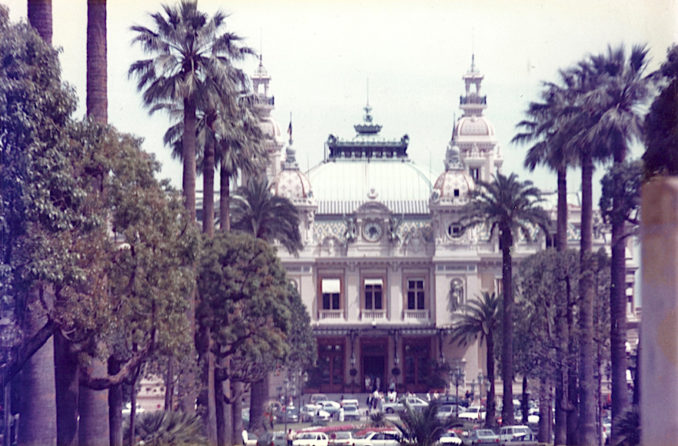
© Always Worth Saying2023, Going Postal
Monte Carlo Casino
After spending much of one’s life in Carlisle, it might be difficult to be sniffy about Monte Carlo but as time goes on, it does become easier.
On this page from the family albums we are standing outside the Monte Carlo Casino in the 1980s. An avenue of palms draws our eyes towards the gaming tables. The photographer (me) stands at the top end of the Casino Gardens. The metal on display about the entrance appears modest by today’s standards. Perhaps the rich have got richer and the poor poorer over the last four decades?
Next door and to the left and out of view are the more exotic Jardins de la Petite Afrique. These days they lead to a less than exotic Zegg and Cerlati jewellery outlet hiding the Casino Cafe de Paris and the over-branded ‘Café de Paris Monte-Carlo à la Salle Empire de l’Hôtel de Paris Monte-Carlo.’
If we pirouette to the southwest to enjoy the Côte d’Azur roof and tree tops, we spy a modest high-rise cluster behind which sleeping-dog-shaped cliffs reach toward a sundrenched sky.
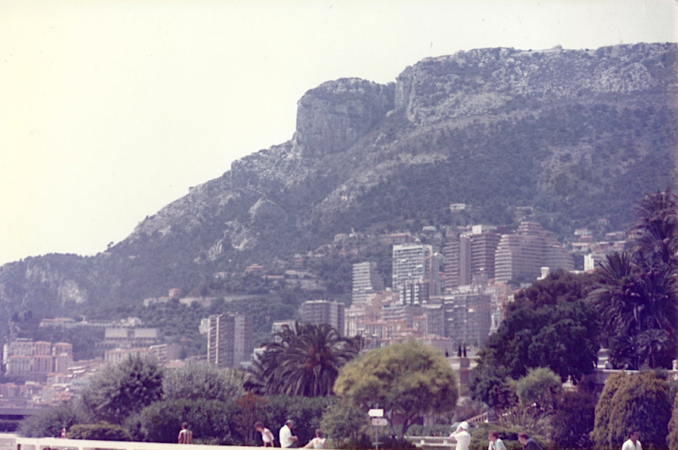
© Always Worth Saying2023, Going Postal
Or rather we once could as the area in between is now covered in concrete and sky-scrapers. This reminds us of the three golden rules of Monaco real estate. Forget about location, location, location (in this case, a tax haven in paradise) and think: you’re bound to lose your view, you’re bound to lose the view, you’re bound to lose your view
Parc Princess Antoinette
The distinctive high rise on the right, with the stepped roof, is easy to locate in other photos and is 2 Rue Honore Labande, seen to the right in the photo below. A three-bedroom flat with a view (for the time being) will set you back €17,500,000.
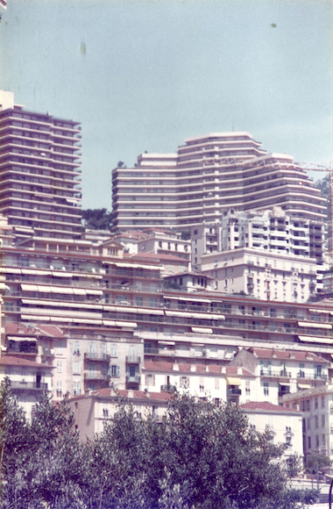
© Always Worth Saying2023, Going Postal
A hint of trees places the photographer to the Parc Princess Antoinette which was bounded by modest garrets with pitched roofs and attic apartments. Not any more. According to the guff, Princess Antoinette Park,
Is a special place – a hectare which is home to hundred-year-old olive trees. This “green lung” at the heart of the Principality is first and foremost a garden for children, offering activities suitable for all ages.
Created in 1917, Prince Albert I saved the area from industrialisation by creating a park to protect the olive groves.
Passing an entrance decorated with a spectacular row of Bougainvilleas, one opens the door to Monaco’s “kingdom” of the sacred olive tree.
Besides ball games, table tennis tables, badminton and volleyball courts, there is a small skateboard park and a mini farm which is home to sheep, goats, ducks, chickens and rabbits. Not only that but also a ‘zen space’ providing a serene area in which to contemplate this:
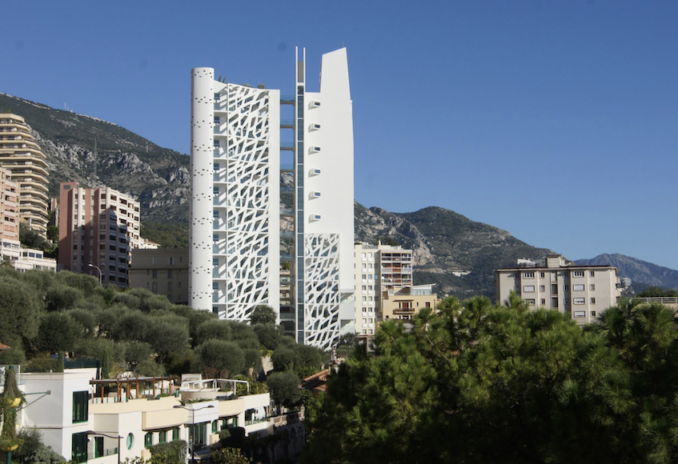
Monaco,
Zbigniew Bosek – Licence CC BY-SA 3.0
Perhaps the worst building we’ve encountered thus far, this view-spoiler is Le Simona at 54 Boulevard du Jardin Exotique and which forms one boundary of the park.
At 300ft high it enjoys being the eighth tallest building in the principality, consisting of 23 floors containing 24 duplexes (apartments with an upstairs and downstairs).
Not content with ruining the views of those nearby, architects Suzanne Belaieff and Jean-Pierre Lott, on behalf of developers JB Pastor & Fils, have also ruined the view of people who live in it by putting wavy concrete beams across every window.
What is the point?
Tête de Chien
Turning towards the cliffs we find ourselves observing the Tête de Chien, or Dog’s Head, an 1,800 ft high rock promontory. Locals liken the landmark to a sleeping Gallic attack dog but everyone else thinks resembles a shy turtle with its head poking out of its shell.

© Always Worth Saying2023, Going Postal
The cliffs sit ahead of the township of La Turbie which, as we found out last time, once connected to Monte-Carlo via a rack and pinion railway which terminated at Beausoleil on the French side of a border running through the urban area.
To the right of the cliff tops can be seen some flat roofs. These belong to Fort Masséna. Completed in 1884, the facility is part of the defensive fortifications built around France between the end of the Franco-Prussian war and the beginning of the First World War. More recently it became an ‘antenna research laboratory’ and ‘international measurement centre’ before being bought from Orange Labs in 2016 by the Principality of Monaco for €30m. All very strange.
The Prince’s Palace
Back at the Parc Princess Antoinette Gardens, if we wander along the Boulevard du Jardin Exotique and turn towards the Mediterranean, we face the Prince’s Palace. Original 12th-century Genoese walls can be seen in the foreground with the more recent palace and two distinctive square towers noticeable above.

© Always Worth Saying 2023, Going Postal
Judging by the angle of the photograph and the well-finished wall-top at bottom of the image, we have stopped at the actual Exotic Gardens of Monaco to admire the view. You can stand at about the same spot and do likewise via this link.
At this point, I’m forced to concede, despite the preponderance of too much greedy modern architecture, some might judge Monte Carlo to remain a bit better than Carlisle.
Speaking of which, this gives us an opportunity to return to my grandparent’s 1950s road trip and see how the palace appeared seven decades ago.
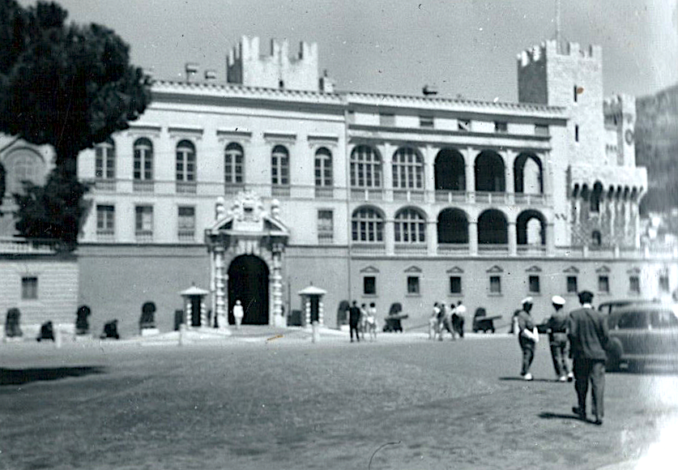
© Always Worth Saying2023, Going Postal
Again, one suspects the world to have been more equal. Perhaps one of those little cars to the right is my grandparents’ redoubtable Ford Prefect which travelled from Ostend all the way to the South of France via Valence Sur Rhone and along the Côte d’Azur.
In the modern day, we can still stand in the same spot. The view is much the same, even to the point of not many people being about.
Part of the cobble sets has been replaced by red spongy tarmac stuff. A close look shows the single chain held between the bollards survives with the bollards themselves having benefited from a lick of black paint.
The frontage is more Grimaldi than Geonese, although the square towers are reminiscent of the northwestern Italian city. In explanation, the Grimaldis were one of the patrician families of Genoa. They rule Monaco to this day, the present occupant of the Prince’s Palace being Albert Alexandre Louis Pierre Grimaldi. Better known as Albert II, the prince is the son of Prince Ranier and Princess Grace (Kelly).
Port de Fontville
About the palace are sheer cliffs. It stands on a crescent-shaped isthmus, the north side of which defines the south quai of Monaco harbour. On the other side, we find Port de Fontville, a man-made marina/harbour made from land reclaimed from the sea. In the 1980s this was a building site for apartments, parks and the football ground – the 18,000 capacity Stade Louis II.
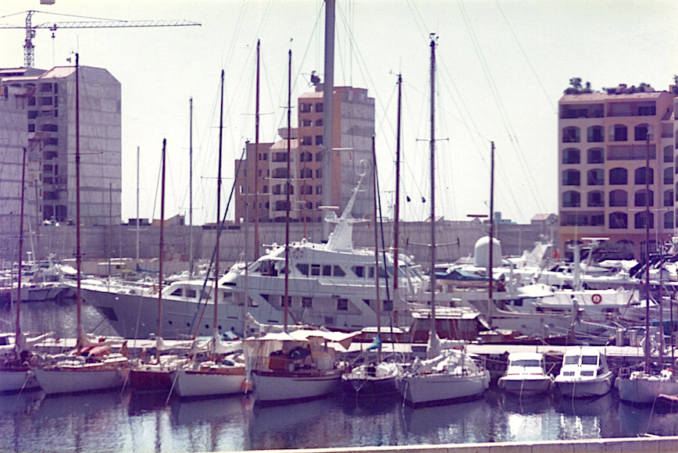
© Always Worth Saying2023, Going Postal
Behind the stadium is the border with France and the French’s reclaimed marina known as Port de Cap d’Ail. It lies next to a beach.
Between the 1980s Monaco railway station (now relocated and underground) and Port de Fontville sits a terrace of gardens including Le Jardin Animalier de Monaco, Le Esplanade Ranier II and Espace Léo Ferré. Puffins will recall Ferré as a Monaqauasue chanteur whose biographical documentary enjoyed a narration from our favourite French film star, Mlle Véro.
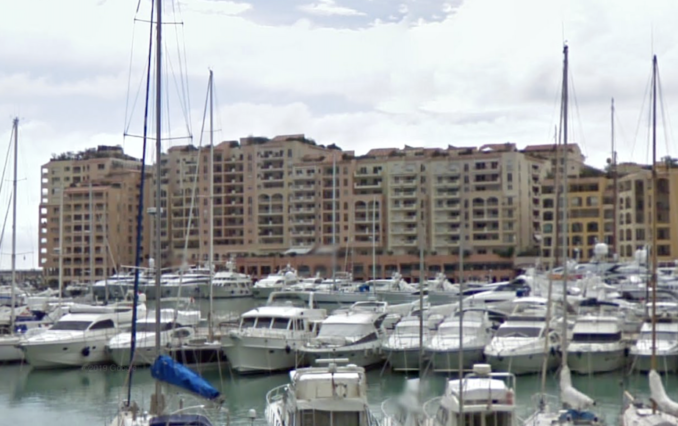
© Google Street View 2023, Google
The finished Port de Fontville is pictured above and is horrible. Judge the rest of the development for yourself through this link.
Why not have separate and distinctive buildings on the quayside, lower in height and with fewer floors? Preserve the roof line but vary it. Use Mediterranean pastel colours, bright whites and different browns and reds for the roofs. Have the floors and windows narrow as the stories rise and put some ornamentation on the sides of the buildings. Preserve some symmetry. Have canopies above the ground floor to shelter the harbourside and proper balconies on the lower floors. Much better. Why not?
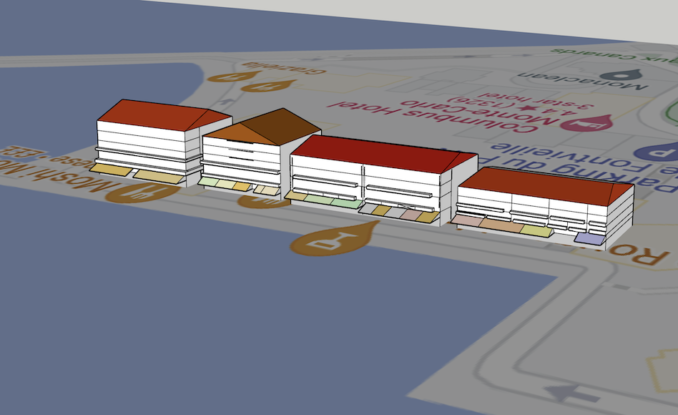
© Google Maps 2023, Google licence
Perhaps the architecture will improve as we head towards the Italian border? Next stop, Menton!
© Always Worth Saying 2023



